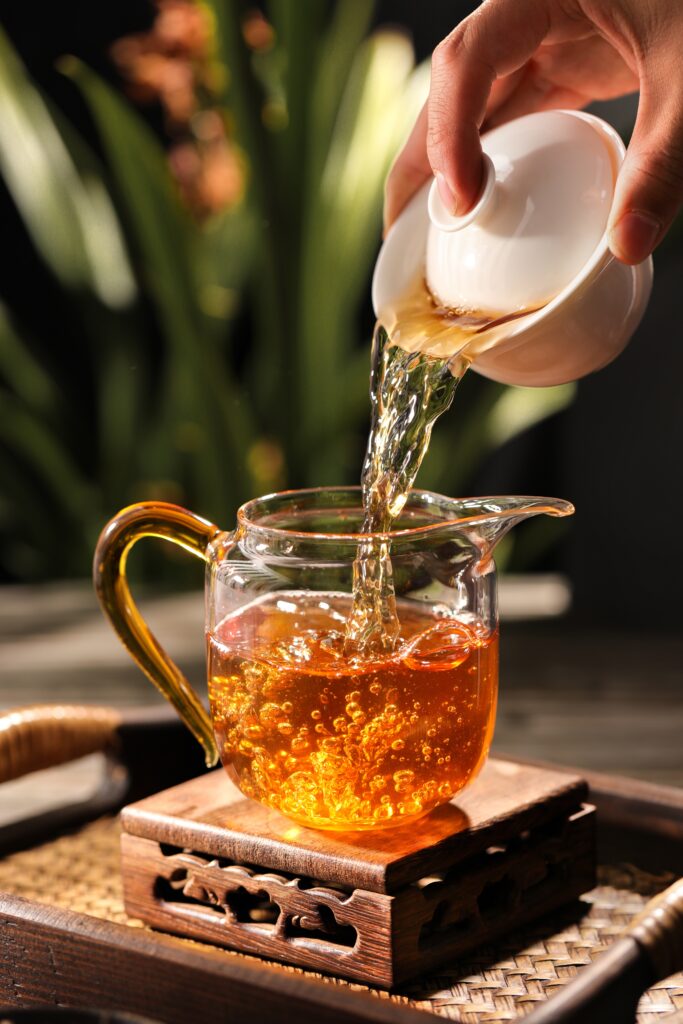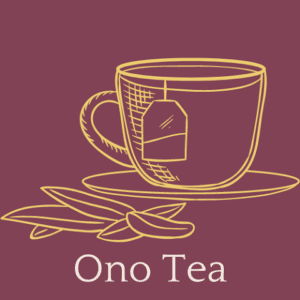The steeping times for oolong tea determine its taste and overall result. You would think steeping oolong leaves longer wouldn’t do anything major, but on the contrary, it does. The taste becomes more complex and full-bodied.
So how long do you steep oolong tea, then? Typically, 45 seconds to 3 minutes is enough time to steep oolong tea and release its flavors, but of course, many people have different ways they like their tea. The good thing is that oolong tea allows for multiple steepings, so if 1 to 3 minutes does not cut it for you, you can steep longer.
A good rule of thumb is to follow the tea label’s recommended steep time. Also, using a tea mug with an infuser is a great practice to observe, especially if you’re new to brewing tea.
This article will offer insights into how long it takes to steep oolong tea as well as its brewing method. Let’s get started!
How Long to Steep Oolong Tea
There are countless ways to steep oolong tea, depending on the taste of the drinker. Generally, steep for 45 seconds to 1 minute; taste the tea after each successive steeping to know if the taste meets your personal preference.
If it doesn’t, feel free to steep it longer.
Oolong tea leaves vary. Good-quality oolong tea with a great leaf shape can be Steeped multiple times for up to 5 minutes. But the steeping time that works for a good-quality tea leaf might be disastrous for a lesser-quality tea leaf.
So, check the steeping time on your oolong tea label before steeping.
You can use a timer for a more optimal result. If you don’t have a timer handy, the one on your phone will suffice.

How to Brew Oolong Tea
Brewing a great-tasting oolong tea doesn’t require any backbreaking endeavor. It shares some similar brewing techniques with green and black tea.
First, ensure you have the right brewing equipment. By this, we mean the right tea set, from the mug down to the spoon; it would aid your brewing experience.
Now, you can decide to brew the oolong leaf using the tested and trusted traditional Chinese techniques. Or choose the Western method, which is a lot simpler but gets the work done.
The difference is that the Chinese technique has a rich cultural background that tea connoisseurs would appreciate. In other words, its rich background and immersive nature will make for a pleasant educational experience.
If you are a beginner tea consumer or want to brew one cup quickly to return to your regular activities, it is better to go with the Western style.
Here are the steps to Brewing a satisfactory oolong tea:
Step 1: Prepare Tea Leaves
Oolong tea is best enjoyed when you brew it with loose-leaf tea as opposed to tea bags. This is because loose leaves have more character, quality, and flavor. Tea bags are convenient for occasions where you do not have loose leaves around.
Measure the right amount of oolong tea for brewing. This isn’t one of those occasions where more is better. For every 6 ounces (0.17 kg) of water, measure one teaspoon of balled leaves or two tablespoons of loose-leaf oolong tea. If you are a metric reader, use 2 grams of tea per 6 to 8 (.17–.23 kg) ounces of water.
You can also check out the tea label for the brand’s recommended measurement. Rinse the tea to remove any impurities before the brew.
Step 2: Boil Water
Getting the water for oolong tea ready is another crucial step to observe. This is because you do not use just about any water to brew oolong tea. So if you intend to use distilled or tap Water, don’t.
Distilled water might taste flat, underachieving the full potential of an oolong tea leaf. Tap water, on the other hand, usually contains chlorine from the water treatment, and that can affect the tea.
The better choice is filtered or spring water. Either would provide an optimal result, blending perfectly with the tea leaves flavor. It doesn’t matter if you’re boiling water using a stovetop pot or an electric kettle; either way, the tea leaves will unfurl at the right water temperature.
Simply aim for 180°F–208°F; that is hot water shy of boiling for brewing. If you fear you won’t get the temperature right, feel free to use a thermometer to gauge the temperature. Or you can let the water cool a bit before pouring it into your Gaiwan or Yixing TeaPot.
Step 3: Warm Up the Mug
Don’t start brewing oolong tea leaves without first warming the mug. This ensures that you’re brewing at a consistent temperature. Therefore, pour the hot water into the mug and swirl it around before you pour away the rinse water.
Step 4: Add Your Oolong Leaf
Now that the mug is warm and your hot water is in, add your oolong leaf or tea bag, as the case may be.
To get the correct measurement, use a teaspoon or a tea Scale. Tea scales are somewhat better in certain scenarios because oolong leaves have different sizes and shapes.
So with the scale, you’re assured you’re using the exact measurement, unlike the teaspoon. Use 6 grams for the tea scale, or add two teaspoons to the water.
Step 5: Steep
Here comes the next part. Follow the recommended steeping method above for 45 seconds to 5 minutes. Furthermore, ensure you’re steeping in 8 ounces of water for each cup.
You can use a measuring cup to know the exact amount if you haven’t taken cognizance of that before. Then the next time, you can eyeball it since you already know how much water will make up 8 oz.
Step 6: Drink Tea
Drink tea with each step to check if it meets your preference. If it does, remove the tea leaves and enjoy your tea. If you’re using an infuser with the mug, you can simply remove the infuser, which would have the tea leaves, and keep it aside for a second use if you so desire.

Different Styles of Brewing Oolong Leaves
As it stands, there are different ways to Brew Oolong tea. There are:
- Gong Fu
- Grandpa Style
- Large Pitcher
- Cold Brew.
1. Gong Fu
This style involves brewing a limited amount of tea leaves briefly and repeating the circle severally. It’s a traditional means of brewing oolong tea in succession with a lidded bowl called a Gaiwan to capture its flavor and aroma.
The Gong Fu tea set usually comes with a teapot, cups, and a pitcher. You won’t feel like you wasted your money if you buy it. But have a bowl or vessel to hold the tea leaves after brewing.
2. Grandpa Style
With the name Grandpa, you would think that this tea brewing style would favor the traditional Gong fu style, but it doesn’t. It’s a style that favors tea drinkers that do not have the time to make tea ceremoniously. It’s very suitable for one tea serving.
The Grandpa style uses more water and fewer leaves for a longer brew time. The catch is that you can refill hot water if the brew is strong or you want a warm tea.
Here’s how you brew with the Grandpa style; measure some tea leaves into a mug, then add hot water with about a 1:40 ratio of tea leaves to the water.
3. Large Pitcher
This is a more practical style that favors brewing for large gatherings. Now, instead of being up on your feet, preparing fresh brews for your guest, large pitchers will aid you in pre-brewing tea to serve when you’re ready.
It’s also an excellent way to prepare iced tea for large gatherings. Simply brew a large quantity of tea with hot water, then refrigerate the tea. A good ratio to observe here is the 1:50 ratio of leaves to water. Brew the tea in whatever pitcher or vessel you fancy, but ensure it’s big enough to collect your brew.
Due to the large quantity, you can brew for about 10 minutes or more, then strain off the tea leaves. Remember, a good way of deciding if the tea is good is to taste it while you’re brewing. When you’re done, you can keep the tea hot by pouring it into a thermos. This way, if someone wants hot tea, you can provide that as well as cold tea by pouring the hot tea on ice.
4. Cold Brew
This style can favor people who want tea without too much caffeine. This is because brewing oolong tea with cold water eliminates most caffeine. Furthermore, it takes longer for the tea to brew or steep, as the case may be, at least 2–3 hours.
The time and patience it requires might not be everyone’s cup of tea, but the brewing method isn’t complicated. Every loose-leaf tea can be cold brewed; experiment to know how to get the best flavor from your oolong.
You can start with 1-2 tablespoons of tea leaves per liter of cold or room-temperature water.
Can You Reuse Oolong Tea Leaves?
Yes, it’s not frowned upon to reuse oolong tea, and there’s a reason for that. After you brew oolong tea leaves for the first time, the leaves unfurl, revealing more of their flavor profile and aroma. The experience becomes much different when you reuse the leaf. Your taste buds will notice a more unique taste.
Of course, this is only applicable to good-quality oolong tea leaves. You can use it 5–6 more times after the first use.
Conclusion
Steeping oolong tea for 45 seconds to 5 minutes is the best way to get the perfect cup. By gradually reducing the infusion times and then extending them again, the oolong tea flavor profile will keep evolving.
Go for filtered water instead of distilled water. Filtered or spring water will blend more with the flavor of oolong tea. A good rule of thumb is to taste the tea as you steep it to ascertain if it meets your taste. Also, cover the lid of the teapot as it steeps to retain the heat in the steeping vessel.
Remember, oolong tea leaves differ in quality. As such, you should observe the leaves while steeping to not oversteep and ruin their flavor.

